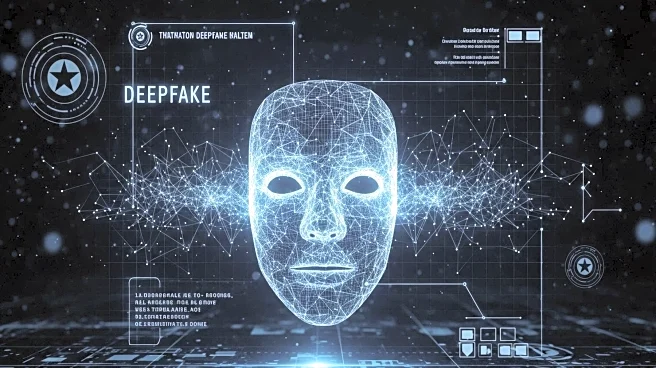What's Happening?
A North Korean cyber threat actor, known as the Kimsuky group, has employed artificial intelligence to create fake South Korean military ID card images as part of a spear-phishing campaign. According to cybersecurity firm Genians, the group used AI tools like ChatGPT to generate these ID card images, which were then used to deceive victims into clicking on malicious links. The attackers impersonated a South Korean defense-related institution, claiming to manage ID issuance for military officials. This campaign, detected by the Genians Security Center on July 17, follows previous phishing attacks by Kimsuky in June, which utilized similar malware for data theft and remote control. The primary targets of these attacks include researchers focused on North Korean studies, human rights activists, and journalists.
Why It's Important?
The use of AI-generated images in phishing attacks represents a significant evolution in cyber threats, highlighting the increasing sophistication of North Korean cyber operations. This development poses a heightened risk to cybersecurity, particularly for individuals and organizations involved in sensitive research and advocacy related to North Korea. The ability to create realistic fake IDs using AI enhances the credibility of phishing emails, making them more likely to deceive recipients. This underscores the need for enhanced cybersecurity measures and awareness to protect against such advanced threats. The implications extend to national security, as the targeted individuals often play critical roles in shaping policy and public opinion regarding North Korea.
What's Next?
As AI technology continues to advance, it is likely that cyber threat actors will increasingly leverage these tools to enhance the effectiveness of their attacks. Organizations and individuals involved in sensitive areas such as defense, human rights, and journalism may need to adopt more sophisticated cybersecurity strategies to mitigate these risks. Governments and cybersecurity firms may also increase collaboration to develop countermeasures against AI-driven cyber threats. Additionally, there may be calls for regulatory frameworks to address the ethical use of AI in cybersecurity.












